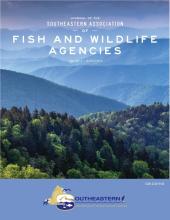Effect of Trophy Regulations and Reservoir Discharge on a Population of Stocked Brown Trout in a Large, Southeastern United States Tailwater
Reservoir tailwaters can be an important resource for developing quality trout fisheries, especially when managed with special regulations. The objective of this study was to evaluate the effectiveness of a 508-mm minimum-length limit and a 1 fish day-1 creel limit on increasing abundance and size of the brown trout (Salmo trutta) in the Cumberland River below Lake Cumberland, Kentucky. Annual stockings of catchable-sized brown trout remained relatively stable throughout the study at approximately 31,000 fish (503 fish km-1). The purpose of the new regulations, which...
